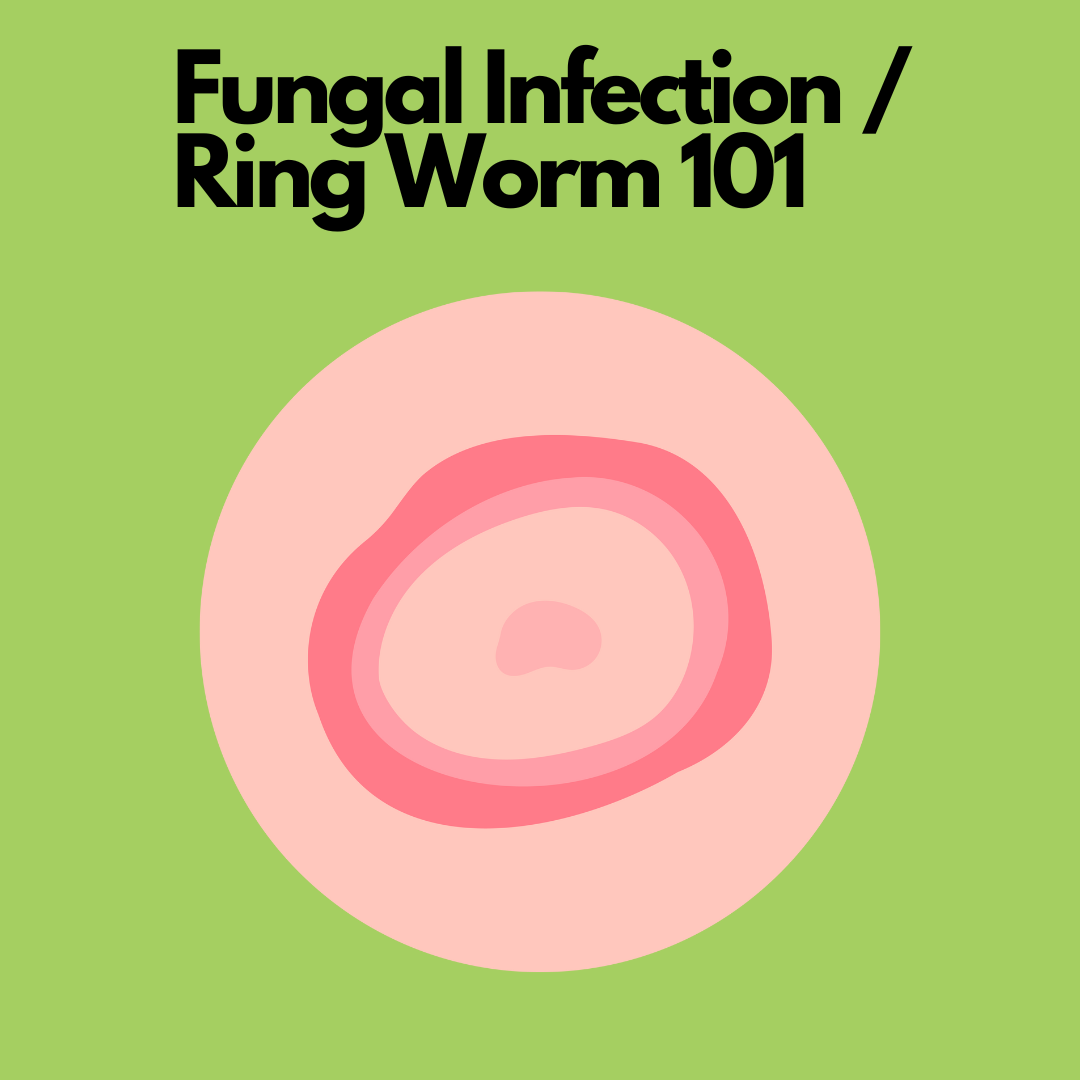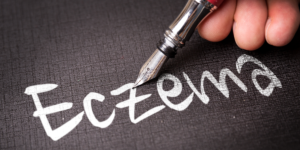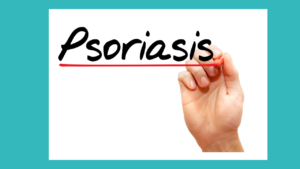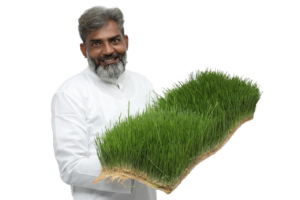What are Fungal infections?
As the name suggests, Fungal infections are a common condition caused by the overgrowth of various types of fungi in or on the body and range from mild to severe.
Since fungi thrive in warm, moist environments, fungal skin infections often develop in sweaty or damp areas that don’t get much airflow. Some examples include the feet, groin and skin folds.
Fungal skin infections can be contracted through direct contact with an infected person or animal, or through exposure to contaminated soil or surfaces.
Fungal skin infections can affect people of all ages and backgrounds. It can cause discomfort and sometimes severe complications if left untreated.
The most common types of fungi responsible for skin infections belong to a group called dermatophyte which thrive on keratin, a protein found in the skin, hair, and nails.
Do I have a Fungal infection?
There are several types of fungal skin infections, each with its own set of symptoms and characteristics.
However, common symptoms include:
- Itching
- Redness
- Development of flaky, scaly or raised rashes
- Dryness
- Cracking or peeling in areas affected by fungal infections.
- In some cases, there may be a Burning or Stinging sensation.
- Blisters or pustules
- Discoloration
- Thickening of affected skin
Some of the common skin Fungal infections include:
- Athlete’s Foot (Tinea Pedis):
It is commonly caused by the dermatophytes Trichophyton rubrum and Trichophyton mentagrophytes. It affects the skin between the toes and the soles of the feet. Symptoms include itching, burning, and Cracking of the skin.
- Ringworm (Tinea Corporis):
It is caused by a group of fungi called dermatophyte. It causes a red or silver ring-shaped rash on the skin with scaly, itchy skin in the center and raised borders. It can affect any part of the body, including the arms, legs, chest, and face.
- Jock Itch (Tinea Cruris):
It is commonly caused by the dermatophyte Trichophyton rubrum. It occurs in the groin area and inner thighs. Symptoms include redness, itching, flaking of the skin and a rash.
- Scalp ringworm (Tinea Capitis):
It is caused by the dermatophytes Trichophyton tonsurans and Microsporum canis species. It affects the skin of the scalp and the associated hair shafts. It may resemble severe dandruff. Symptoms include localized bald patches, associated itching and scaling, tenderness or pain in the patches or in some severe cases permanent hair loss.
- Candidiasis (Yeast infections):
It is caused by the overgrowth of the fungus called Candida. It can affect various parts of the body, including the folds of the Buttocks, armpits, Groin, under the breasts and the skin around the nails. Symptoms include itching, redness, scaling of the skin and Patches that ooze clear fluid.
Why do I have a Fungal infection?
Your Fungal infection may be due to one or more reasons such as:
- Weak immune system
- Existing Immuno-compromising medical conditions like HIV, or those undergoing chemotherapy.
- Skin to skin contact with an infected person.
- Sharing Personal Items like towels, clothing, or footwear with an infected individual.
- Warm and Humid Environments: Ideal environment for fungal growth.
- Wearing tight clothing
- Poor Hygiene; excessive sweating
How to treat & prevent a Fungal infection?
Lifestyle changes that can help include:
- Antifungal Medications: Topical or oral medication may be prescribed.
- Maintain Good Hygiene: Keeping the affected area clean and dry is essential for preventing the spread and recurrence of fungal infections.
- Regularly wash and dry the skin thoroughly, especially in areas prone to moisture buildup.
- Avoid using harsh soaps and cleansers: They can strip the skin of its natural oils and create an environment that is favorable for fungal growth.
- Wear Breathable Clothing: Opt for breathable fabrics like cotton.
- Avoid tight clothing to prevent excessive sweating. In other words, create an environment less favorable for fungal growth.
How do I Neutralise my Fungal infection?
Neutralise Naturals is based on the superfood Wheatgrass.
Wheatgrass is packed with:
- Chlorophyll
- Glutathione
- The 20 standard Amino acids
- Enzymes
- Fat soluble Vitamins like A, E & K
- Water soluble vitamins like B Complex & C
- Crucial elements like Calcium, Zinc, Iron and Magnesium.
It’s chemical and elemental makeup has bestowed upon it wonderful properties like:
- Excellent Detoxifier
- Potent antioxidant
- Anti-inflammatory
- Antibacterial
- Antifungal
- Alkalization
- Cool essence
Since wheatgrass is nature’s product, chances of serious side effects are minimal making it a safe and excellent supplement to daily diet.
Neutralise Naturals harvests these young sprouts of the wheat plant without any nasty chemicals, pesticides or other additives on the 7th day when their nutrient content is at the peak. Its nutrient profile has been bolstered by the addition of roots to make it the ultimate complete nourishment.
Neutralise Naturals products recommended for Fungal infection include:
- Wheatgrass powder
- Wheatgrass face wash
- Wheatgrass soap
- Wheatgrass cream
- Wheatgrass shampoo & conditioner
- Wheatgrass powder:
Unlike others in the market that offer Wheatgrass powder, Neutralise Naturals has also added the roots of the plant, in addition to the leaves, so you get all the nutrients from root to tip.
Improve your overall health and skin by incorporating this super-herb into your Daily Diet. Following are a few ways you can use it as:
-
- Tea: Drinking Wheatgrass tea will help you to Internally cleanse, detoxify and strengthen the body systems including your immune system. You can add lemon and/or honey for taste.
- Smoothies or juices: ‘Green-ify’ your favorite smoothies or juices by adding wheatgrass powder to it.
- Salad: Sprinkle some of this green magic into your salad dressings.
- Paste: Wheatgrass’s cool nature helps to calm and sooth irritation. Get creative by mixing the powder with rosewater, yogurt, etc. to form a thick paste to apply over the affected area.
- Ice cubes: Although research is ongoing, cryotherapy has shown promising potential for certain types of skin fungal infections particularly those that are superficial rather than those that have penetrated deeper layers of the skin. Give yourself an at home cryotherapy by freezing the concoction in ice cube trays.
- A well-nourished skin barrier may be more resilient against fungal infections. Hence, having a good, nourishing skincare routine is beneficial.
- Wheatgrass Avocado Herbal face wash:
A cleansed skin ensures better absorption of the products applied next.
A common misconception regarding face wash is that the drier and tighter it leaves your skin afterwards the better. This is completely and utterly incorrect. An ideal face wash is one which cleanses your skin well, removing the dirt and grime but not stripping your skin of its natural oils.
Ingredients: Wheatgrass with roots, avocado pulp, Coco butter, Shea butter, cow butter, Vitamin E oil.
- Wheatgrass and roots help to draw out the toxins and impurities from the skin. It helps calm and soothe irritation.
- Avocado pulp helps calm irritated skin, keeps it moisturized and strengthens the moisture barrier. It clarifies and soothes the skin all while being gentle.
- Coco butter, Shea butter, cow butter, Vitamin E oil are all well known moisturizing agents.
Directions: Take 2 pumps in the palm of your hands and emulsify. Apply it on the face and gently rub it in for 1-2mins, giving special attention to the problem areas. Rinse with Lukewarm water.
- Wheatgrass Herbal soap: For body (in case of discoloration).
This soap cleanses well and doesn’t strip the skin of its natural oils all while reducing discoloration. wheatgrass helps increase its wound healing abilities.
Ingredients: Wheatgrass, Cow butter, Herbs, vegetable oil, aroma therapy oils.
- The base of the soap is Desi cow butter to which essential oils have been added which help moisturize.
- Beneficial herbs have also been added.
Directions: We don’t need to tell you how to use soap. So here’s a tip – Don’t immediately Wash off the Soap. Let it stay for at least 5 minutes and then rinse for better results.
- Wheatgrass Moisturiser cream: For Face and Body.
Our moisturizer is Free of preservatives and other chemicals.
Ingredients: Wheatgrass with roots, cow butter, honey wax, turmeric oil, coconut oil, til oil, neem oil, olive oil, Almond oil, ghee, Vitamin E extract.
- Wheatgrass has antioxidants in it which provide sun protection, preventing darkening of any existing discoloration. The antioxidants also prevent cellular damage thereby slowing down the process of ageing.
- Desi cow butter, ghee and added oils particularly coconut oil, olive oil and almond oil keep the skin soft and moisturized.
- Turmeric oil increases the anti-inflammatory and antifungal power.
- Neem oil increases the antifungal, anti-bacterial and purifying power.
Directions: After properly cleansing the skin, apply the cream generously on damp skin to facilitate better absorption.
- Wheatgrass shampoo & conditioner: For scalp.
This shampoo cleanses the scalp well, removes buildup and balances scalp pH, paving way for healthy hair.
Ingredients: Wheatgrass, coconut oil, desi cow butter, herbs like hibiscus, amla, soapnut & shikakai and SLS.
- Wheatgrass helps to draw out the toxins and impurities while calming and soothing irritation.
- All of the above-mentioned herbs prevent hairfall while promoting hair growth and strength.
- Hibiscus promotes healthy hair growth and fights dandruff.
- Amla helps retain the moisture content of the hair.
- Soapnut is tough on lice.
- Shikakai is a gentle cleanser and helps balance scalp pH.
- Coconut oil, cow butter moisturizes and nourishes the strands.
Directions: Wet hair with lukewarm water. Take a palm full of shampoo and emulsify it well between the palms. Gently massage it well into the scalp and let it sit for 3-5 mins before rinsing it out. Shampoo the scalp again for a second time, you can add 2-3 drops of tea tree essential oil which is a well-known antifungal agent, and repeat the process for a thoroughly cleansed scalp.
Diet
Diet alone cannot guarantee immunity against fungal skin infections; however, a balanced and nutritious diet can support overall skin health and potentially reduce the risk of fungal overgrowth.
What should I avoid in my Diet?
While diet alone may not be the sole cause of fungal infections, it can be a significant contributing factor. Certain foods have the potential to exacerbate fungal infections or compromise skin health. These include:
-
- Over consumption of Sugary foods
- Over consumption of Refined carbohydrates
- Excessive alcohol intake
- Processed foods often have preservatives and additives that can disrupt the body’s natural balance.
- Dairy products have lactose which can be fed on by fungi to promote growth. The hormones present in dairy products can also upset the natural flora and contribute to fungal growth.
What can I include in my diet?
Foods that can help prevent and treat skin fungal infections include:
- Omega 3 Fatty acids can help reduce the severity of the infection. They are found in:
- Fatty fish.
- Nuts like almonds and Walnuts.
- Seeds like Chia seeds and Flaxseeds.
- Probiotics & Fermented foods like yogurt, pickle and kefir encourage healthy gut microbiome and strengthen immunity.
- Antioxidant rich foods like Berries, leafy greens, Wheatgrass tea promote wound healing and protect skin from damage.
- Spices and herbs include:
- Garlic has natural antifungal properties.
- Turmeric contains curcumin, which has anti-inflammatory and antifungal properties.
- Ginger has anti-inflammatory and immune-boosting properties that can support the body’s ability to fight off fungal infections.
- Adequate hydration helps to effectively flush out toxins.
- Coconut Oil contains caprylic acid, which has been shown to have antifungal properties.
Certain Nutrient deficiencies like that of Vitamin C, Zinc and Iron have been associated with increased susceptibility to fungal infections. Hence consuming foods rich in these nutrients is beneficial.
- Vitamin C rich foods include:
- Citrus fruits
- Amla
- Kiwi, guava, papaya
- Bell peppers, particularly red bell peppers.
- Zinc rich foods include:
- Whole grains like quinoa, oats, and brown rice.
- Legumes like chickpeas, lentils, and beans.
- Nuts and Seeds like cashews, pumpkin seeds, hemp seeds.
- Vegetables like spinach, peas and mushrooms.
- Fruits like Berries and Avocados.
- Iron rich foods include:
- Red meat, organ meat
- Seafood
- Nuts and Seeds like cashews, almonds, peanuts, pumpkin seeds and sesame seeds.
- Beans and legumes such as kidney beans, chickpeas, and lentils.
- Dark leafy greens like spinach.
- FYI, wheatgrass has all the above nutrients and more. Incorporate it into your daily diet to meet your daily nutrient quota.




A.I Create & Sell Unlimited Audiobooks to 2.3 Million Users – https://ext-opp.com/ECCO
An Ultimate Web-Hosting Solution For Business Owners https://ext-opp.com/HostsMaster
An Ultimate Web-Hosting Solution For Business Owners https://ext-opp.com/HostsMaster
An Ultimate Web-Hosting Solution For Business Owners https://ext-opp.com/HostsMaster